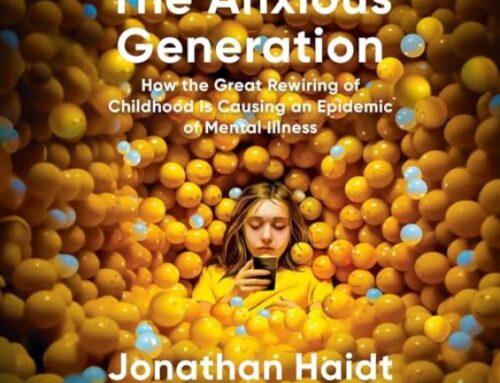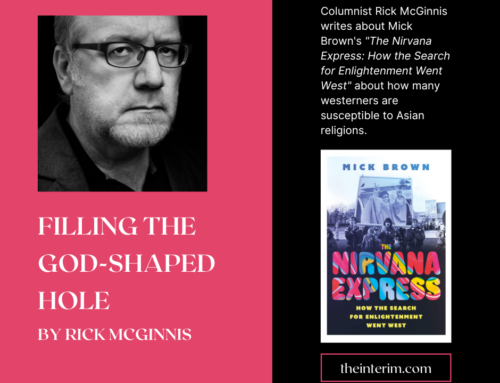 The opening scene of Mother and Child, a 2009 box office dud recently recalled to life on DVD, opens with a scene that’s pitifully familiar. A boy and a girl – teenagers, and just barely at that – sit on a bed kissing; it’s the bad hair and bellbottom ‘70s, but it could really be any time since what’s next is dramatically inevitable. In one quick cut she’s pregnant, in a room full of other young girls, all apparently exiled from their families till their due date. Another cut and she’s straining in the delivery room, then the whole brief montage ends with her watching through reddened eyes as the baby is taken away.
The opening scene of Mother and Child, a 2009 box office dud recently recalled to life on DVD, opens with a scene that’s pitifully familiar. A boy and a girl – teenagers, and just barely at that – sit on a bed kissing; it’s the bad hair and bellbottom ‘70s, but it could really be any time since what’s next is dramatically inevitable. In one quick cut she’s pregnant, in a room full of other young girls, all apparently exiled from their families till their due date. Another cut and she’s straining in the delivery room, then the whole brief montage ends with her watching through reddened eyes as the baby is taken away.
The scene is meant to introduce us to two of the characters in Rodrigo Garcia’s film, but it was hard for me not to be reminded of my own entry into the world, which began in similar circumstances, right down to the teenage girl and the hopeless boy and the quick adoption. I suppose I should be more emotionally fraught about it all – the characters in Mother and Child certainly are – but I have always felt like a disinterested insider amidst all the personal anguish and slow-boiling debates swirling around adoption and the rights and demands of its essentially unwilling participants.
Adoption is, of course, an evergreen issue in the pro-life struggle, frequently imagined as the last best option in arguments, practical and theoretical, about the fate of “unwanted” babies. For this reason alone it’s worth taking a look at any film that Hollywood might make about the issue, the process, and its emotional echoes.
To be sure, Mother and Child isn’t likely to have a profound effect; according to available figures, it’s made back just over a million dollars of its approximately US$7 million budget after it opened in just four American theatres last May, and screened fleetingly in Canada. This, in spite of a cast featuring big names (Annette Bening, Naomi Watts, Samuel L. Jackson) as well as a supporting cast full of familiar TV actors (Jimmy Smits, Kerry Washington, Cherry Jones, David Morse, Amy Brenneman). With its scant budget in mind, it’s worth noting how much talent you can get for so little these days, though considering the results, it’s unlikely that Hollywood will knowingly make the same mistake again.
After the opening scene, we flash forward to the present, where the teenage mother has become a physical therapist, caring for recuperating seniors during the day and returning home to her invalid mother at night. As played by Annette Bening, she’s a tightly coiled mess – professionally compassionate at her job, dutiful at home, but utterly unforgiving in her personal life, and driven to impatience in the presence of children.
Somewhere in the same city is Naomi Watts, a driven, ambitious lawyer who regards her private life as a sort of experiment, a place to amuse herself in the scant spaces of her life not consumed by her career. The story of these two women comprise the bulk of the film’s plot, and readers will forgive me if I don’t explicitly reveal their connection, though you’ll doubtless be able to guess it yourself – anyone watching the film will have connected the dots long before the film does.
Adoption, the film seems to imply, has wounded these two women deeply, so much so that it casts an ominous light on the film’s third plotline – Kerry Washington as a young wife desperate to adopt after she’s discovered she’s infertile. But the film also casually undercuts this presumption; Watts’ steely lawyer is really suffering from the indifferent upbringing of her adoptive parents, while Bening’s unhappy caregiver lives with the pain of both her own poor decision – looking for love in sex with a child’s confused impatience – and that of the mother who forced her to give the child away.
The danger is that anyone chancing on Mother and Child eager for some perspective on adoption will have ample reinforcement for an image of adoption as essentially sad and ill-considered, a fraught decision, both when the child is born and for years afterward. Personal experience doesn’t confirm this; I have known the name of my birth mother for years, and two or three phone calls could bring her back into my life, but unlike almost every adoptee in Garcia’s film – and nearly every one you read about in newspapers – I’ve never felt the imperative.
My adoption story would be a dramatic squib, since I’ve always been able to appreciate the motives my mother might have had in giving me up, vague and various as they might be to me. I’ve also never doubted the acceptance of the family that raised me, and if any trauma echoed through my life, it was the death of my adoptive father when I was four. We live in a world of approved narratives, sadly, and the one for adoption comes front-loaded with pain and melancholy and regret, but it bears little resemblance to the one I’ve lived. As an alternative to abortion or a remedy for childlessness, adoption isn’t a compromise or a consolation prize, and I’d recommend it wholeheartedly to anyone.




